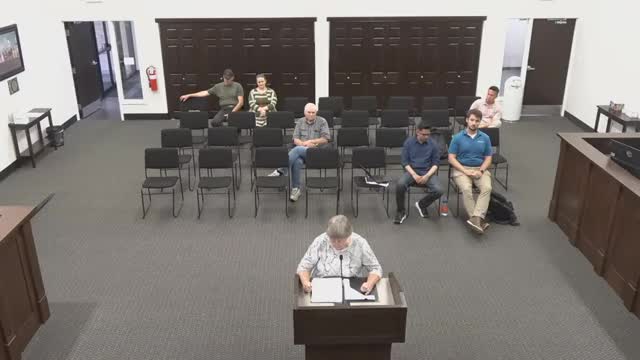Farmers fight back against land loss to corporate interests
July 23, 2024 | Machesney Park, Winnebago County, Illinois

This article was created by AI summarizing key points discussed. AI makes mistakes, so for full details and context, please refer to the video of the full meeting. Please report any errors so we can fix them. Report an error »

During a recent government meeting, a passionate discussion emerged regarding the future of local farmland and its significance in the face of increasing development pressures. A speaker, identifying as a farmer and conservationist, argued that the best use of a specific property, currently designated for residential development, should remain as farmland. This perspective was met with surprise when the village's representative, Ms. Houston, suggested that maintaining farmland was not beneficial for the village, raising concerns about the underlying motivations for such a stance.
The speaker highlighted the disconnect between the village's interests and the broader implications of losing agricultural land, emphasizing that the village does not collect real estate taxes, making the financial argument for development less compelling. They questioned why the village would allow a potentially harmful project to replace productive farmland, suggesting that the decision could be influenced by external interests rather than community welfare.
Drawing attention to a national trend, the speaker lamented the systematic reduction of farmland across the United States, citing examples from California, Idaho, and Kansas where farmers faced severe restrictions and losses. They expressed concern that these actions threaten the nation's food supply, describing it as a \"death by a thousand cuts.\" The speaker warned that as farmers struggle to survive, they are increasingly forced to sell their land to large investment firms and foreign entities, further distancing food production from local communities.
The meeting underscored the critical need for dialogue about agricultural preservation and the potential consequences of prioritizing development over farmland, raising questions about the future of food security in the region.
The speaker highlighted the disconnect between the village's interests and the broader implications of losing agricultural land, emphasizing that the village does not collect real estate taxes, making the financial argument for development less compelling. They questioned why the village would allow a potentially harmful project to replace productive farmland, suggesting that the decision could be influenced by external interests rather than community welfare.
Drawing attention to a national trend, the speaker lamented the systematic reduction of farmland across the United States, citing examples from California, Idaho, and Kansas where farmers faced severe restrictions and losses. They expressed concern that these actions threaten the nation's food supply, describing it as a \"death by a thousand cuts.\" The speaker warned that as farmers struggle to survive, they are increasingly forced to sell their land to large investment firms and foreign entities, further distancing food production from local communities.
The meeting underscored the critical need for dialogue about agricultural preservation and the potential consequences of prioritizing development over farmland, raising questions about the future of food security in the region.
View full meeting
This article is based on a recent meeting—watch the full video and explore the complete transcript for deeper insights into the discussion.
View full meeting
